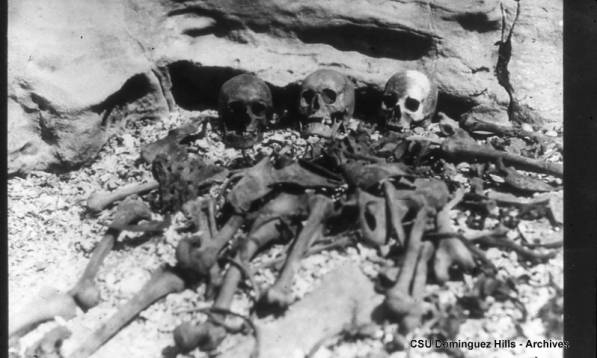On the morning of August 6, 1846, Juan and Jose Sepulveda were at the Port of San Pedro and spotted an American Warship and sent word to the local Mexican army. This ship, commanded by Commodore Robert Stockton, had been sent to San Pedro by President Polk, to seize California in the name of the United States, after hostilities had begun with Mexico on April 25, 1846. On August 11th, Stockton began to march his troops from San Pedro to the pueblo Los Angeles. The local Mexican soldiers, unprepared to defend the city, fled to Mexico, and on August 13th, Stockton rode into Los Angeles without firing a shot.
Stockton, returning to Monterey, left Lt. Gillespie in charge of Los Angeles. Lt. Gillespie proved to be particularly unsuited to command the city, and after issuing a number of very draconian measures, including limiting the right of more than 2 people meeting together and arresting several important citizens for questioning, the people of Los Angeles rose up in rebellion.
On October 6th. the frigate “Savannah” arrived with reinforcements. Juan Sepulveda, in charge of a 45 man patrol, saw the arrival of the American war ship, and sent word to other Californians. The Californians repeatedly attacked the advancing American column, and after a particularly devastating cannon attack, the Americans again retreated to the “Savannah” in San Pedro harbor. The Americans buried their dead on Deadman’s Island in the harbor, and waited for reinforcements.

Bones discovered on Deadman’s Island during the removal of the Island for the construction of the San Pedro breakwater. Photo dated 1928, courtesy of California University Dominquez Hills archives
On October 23rd, the “Congress” sailed into San Pedro harbor with Commodore Stockton and reinforcements. The Californian forces created an illusion of having many more men than they actually had by riding in a circle single file through a gap in the trees in a hill overlooking the harbor, and by dragging brush to kick up dust. Stockton, thinking that he was facing a force of at least 800 men, panicked and immediately set sail for San Diego. The war was far from over, however, as a land force led by Colonel Stephen Kearney was moving across the continent towards California. Kearney succeeded in reaching Stockton in San Diego, and on December 29th, their combined force of approx. 600 men marched up the coast towards Los Angeles.
On the morning of January 9th, 1847, a bloody battle took place overlooking the San Gabriel River, near present day Montebello, between the Californian’s and the Americans, and during the battle, young Ygnacio Sepulveda, the brother of Juan and Jose Sepulveda was killed. The next morning, the triumphant American forces marched into downtown Los Angeles.
On January 11th, Fremont’s men reached the San Fernando Valley and when Andres Pico, leader of the Californian forces surrendered his sword in a Cahuenga rancho house, California’s participation in the Mexican-American war had ended. On February 2, 1848, the Treaty of Guadeloupe Hidalgo was signed annexing California to the United States.
For more information about Palos Verdes and South Bay Real Estate and buying and selling a home on the Palos Verdes Peninsula, visit my website at https://www.maureenmegowan.com . I try to make this the best real estate web blog in the South Bay Los Angeles and the Palos Verdes Peninsula. I would love to hear your comments or suggestions.




